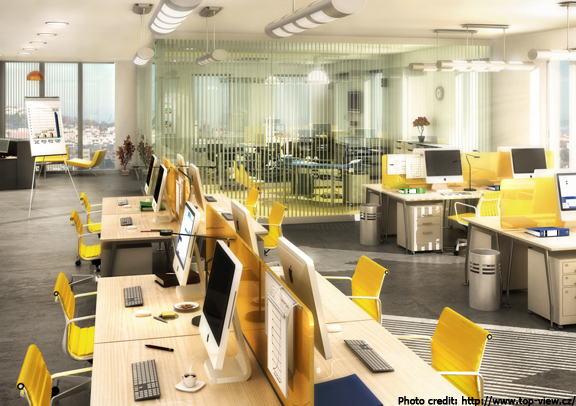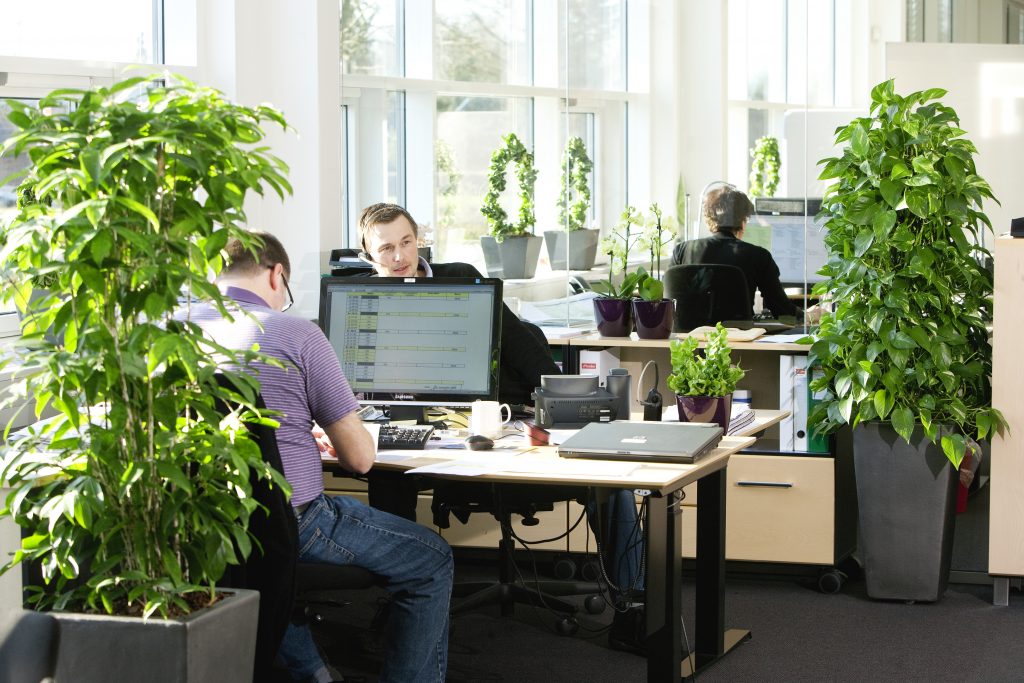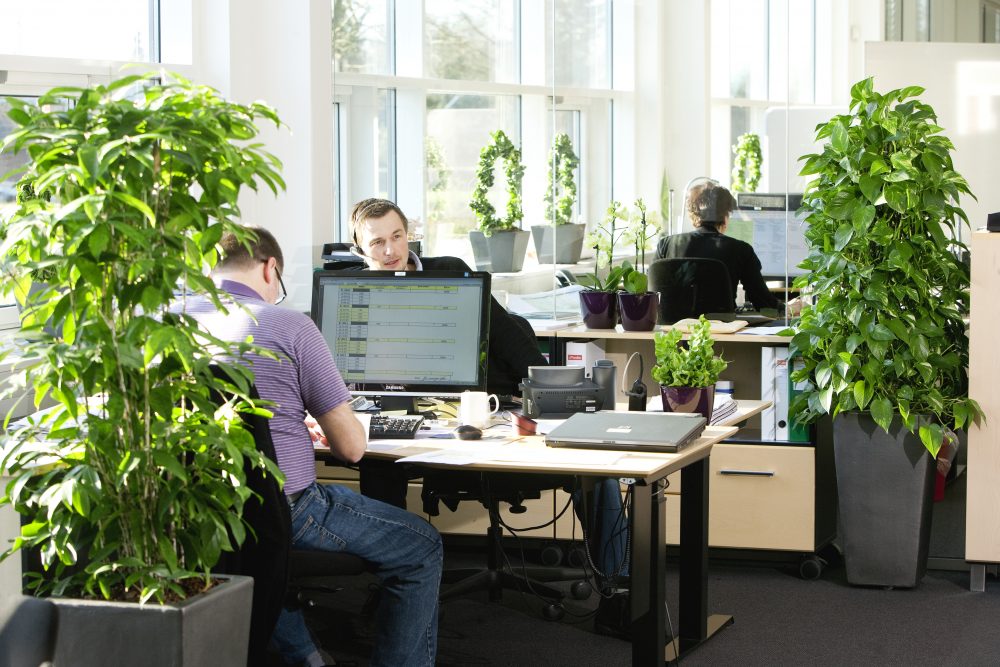
Odds are good if you work in an office, it looks like this. Something is missing which could increase your productivity – plants!
Companies were quick to jump on board the open office design trend when it first showed up in the 1990s. Busting down the doors created community and encouraged creativity. People also needed less workspace thanks to technology. No one needed a huge computer workstation anymore when a laptop or even a tablet or phone would do.
By opening up office space and shrinking the average workstation, companies could also save a lot of money on their office leases. The result: the International Facilities Managers Association says 70 percent of all workplaces today have some kind of open office design.
In the 20 plus years since the walls came down, workplace efficiency experts have learned a lot – mainly that the pendulum swung a little too far and some corrections are needed. The main problem? While open offices do encourage more collaboration, they also create a lot of interruptions and distractions. It’s hard for even the most diligent and focused employee to maximize productivity.
Study after study over the last 10 years finds the open office created a whole new set of problems: Interruptions negatively affect productivity. The more senior the employee, the worse it gets. Morale drops when you have less ability to control your physical work environment including things like lighting or temperature. Open office activity and noise affects an employee’s recall and even basic math and reading skills. A study from Denmark found workers in open office environments take 62 percent more sick leave.
Workers are more stressed out and distracted. Our senses are overstimulated by all sorts of noise. Who can concentrate when you have co-workers yakking across the room? Research shows people in noisy environment become less motivated and less creative. So to block out noise, a lot of people resort to wearing earbuds or noise-cancelling headphones. Voila – a 2005 study by two psychologists found the better you are at screening out noise, the more effectively you work.

You’ll be more productive, happier, and take less sick days when you work in an office with plants like this one.
But this isn’t going to solve another problem: visual noise. When there is activity or movement in an employee’s field of vision, it creates constant distractions and stops analytical thinking and ruins concentration. It isn’t as if you can put blinders or a mask on to stop it from happening. You can’t help wondering what all your co-workers are talking about across the room.
Some employers are trying to deal with the issue by creating quiet workspaces where employees can move when they need to concentrate. AT&T created spaces it calls “focus rooms,” small rooms with single desks. The Boston Consulting Group decided to install 500 oversized, 34-inch curved computer monitors for employees at its New York office to block their view.
The San Francisco software company Segment found another solution: plants. It reconfigured its open office environment by moving walls into angles and creating more of a maze, then added a generous amount of large potted plants and hanging plants to separate employee desks from corridors so they aren’t exposed to foot traffic.
This is a solution Good Earth Plant Company is squarely behind! Not only do the plants block all the visual noise, they also quiet down the noise of the working environment. Living walls make excellent sound barriers. They also process carbon dioxide and return cleaner oxygenated air into an open office. People are able to breathe better, and we would not be surprised if a study found a reduction in sick days.
We already know the many positive effects of plants in the workplace. They increase overall well-being, reduce stress, increase productivity and overall satisfaction. The more we learn about the biophilic connection human beings have with nature, the more we also realize how damaging it is to shut people off from the outside environment in sterile offices all day. It’s simply unnatural and unhealthy.
Like it or not the open office is here to stay. The cost advantages are too great to put the walls back up. Employees do say they feel a greater sense of camaraderie and a more collaborative management structure in an open office environment. But the distractions need to be minimized.
If businesses don’t provide employees the proper environment to maximize their productivity, they can’t do their jobs. You can’t blame them for not being able to perform at their best for you. It is a whole lot less expensive to improve your workplace environment by incorporating nature through plants than to issue headphones, buy massive computer monitors or put the walls back up.



